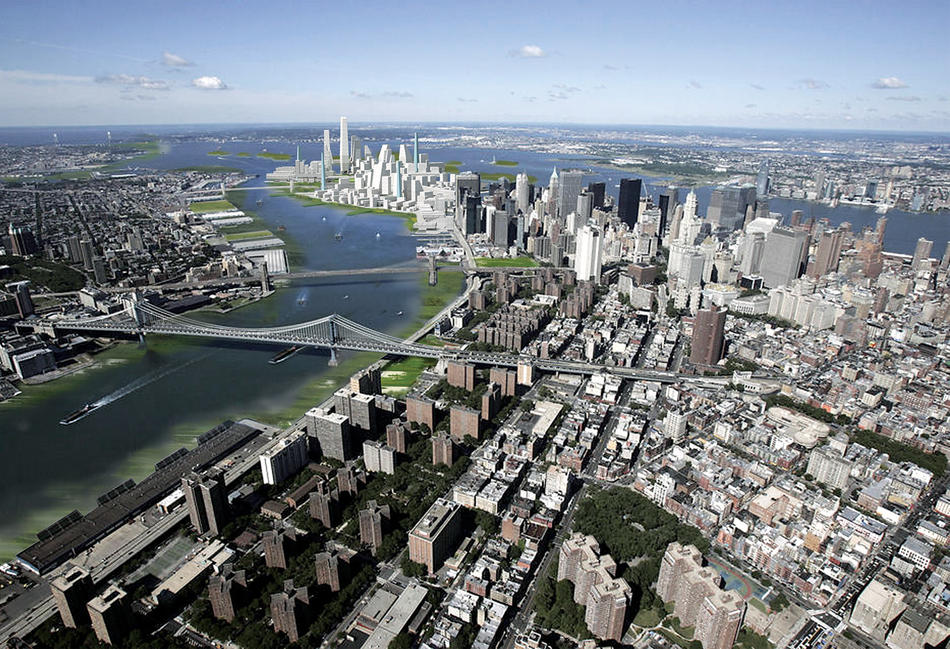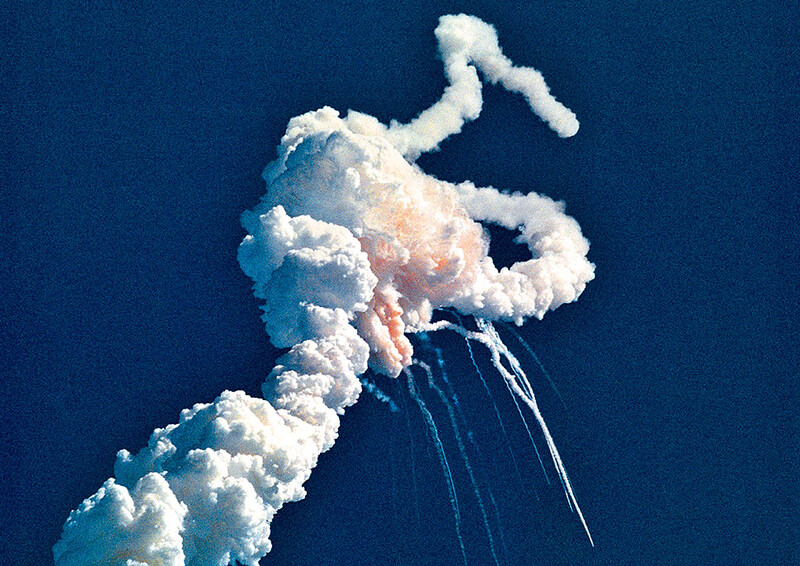New Yorkers have a long history of building on water. In the nineteenth century, they dumped huge quantities of coal ash and wood ash offshore to create much of the land beneath the present-day Brooklyn neighborhoods of Red Hook, Carroll Gardens, Williamsburg, and Greenpoint, in addition to nearly one-quarter of Lower Manhattan. During the last century, they built the 1939 World’s Fair site, JFK airport, FDR Drive, and Battery Park City upon dirt excavated from nearby construction sites and the beaches of Jamaica Bay.
Why stop now? A team of Columbia researchers has proposed what would be the city’s most ambitious land-reclamation project yet: a land bridge that would extend Manhattan’s southeastern tip all the way to Governors Island, a half mile out in the harbor. The researchers presented their idea at a conference hosted by the city’s planning department recently. They displayed artist renderings of a tall and verdant new district with a dozen skyscrapers surrounded by nearly 270 acres of greenways and waterfront parks. If we were to start soon, they said, the entire 640-acre development could be finished by 2035.
The researchers, who are based at the Center for Urban Real Estate (CURE), a new think tank at Columbia’s Graduate School of Architecture, Planning, and Preservation, call their imagined neighborhood LoLo, for Lower Lower Manhattan. They say it could provide housing for 100,000 people, jobs for 360,000, and tax revenue for the city totaling $900 million per year.
“In addition to the long-term economic returns, the environmental benefits would be pretty dramatic,” says Vishaan Chakrabarti, who directs CURE and is the Marc Holliday Associate Professor of Real Estate Development. “When you create a neighborhood from scratch, you can put in waste-to-energy facilities, desalination plants for fresh water, and other types of green infrastructure that people don’t want squeezed into their existing neighborhoods.”
Where would all the dirt come from? That’s easy: the Army Corps of Engineers routinely dredges the bottom of New York Harbor to maintain shipping channels. Over the next two decades, the federal agency is expected to remove 190 million cubic yards of silt — ten times what LoLo would require.
“All that material is going to end up in abandoned mines around the country if we don’t use it,” Chakrabarti says. Chakrabarti acknowledges that LoLo is a long shot. Zoning regulations for building atop landfill are much stricter now than when the city last undertook a big land-reclamation project, the ninety-two-acre Battery Park City, on the western shore of Lower Manhattan, in the 1970s. There is also the fact that LoLo would alter Governors Island, an old military base turned into a park in 2003. LoLo would envelop that historic landmark, forming a new ring of land around it that would be open to developers. This wouldn’t necessarily violate the island’s protected status, Chakrabarti says, because its grassy interior and historic infrastructure would be preserved. But it could make LoLo a tough sell to New Yorkers, many of whom like Governors Island the way it is — as a quiet getaway accessible only by ferry.
Nevertheless, Chakrabarti, an architect and developer who led the firm Related Companies’ rezoning applications for the Hudson Yards project in Midtown Manhattan, insists that he is “dead serious” about realizing this plan; he and his colleagues at CURE intend to release a full report to the public this summer.
The best argument in favor of LoLo, Chakrabarti says, is that it would be good for the planet. He points out that city dwellers, with their small homes and use of public transportation, tend to have moderate carbon footprints.
“In the next few decades, New York City’s population is projected to grow at a much slower pace than the region’s suburban population,” he says. “That’s not good. We should be doing everything possible to make room for more people in the city.”



